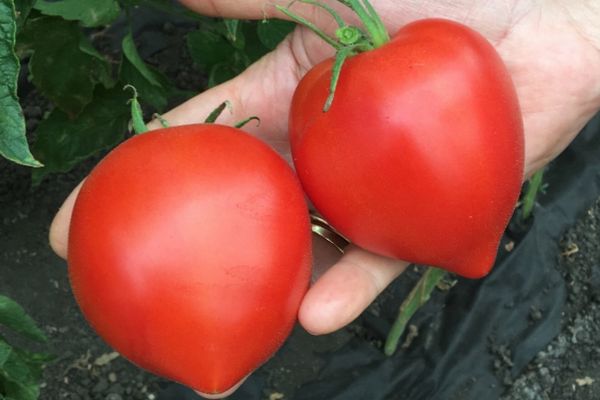 Summer residents who want to get a large harvest of delicious tomatoes in June should pay attention to the Fifti variety: unpretentious in care, it will pamper the whole family with freshly poured fruits in early summer.
Summer residents who want to get a large harvest of delicious tomatoes in June should pay attention to the Fifti variety: unpretentious in care, it will pamper the whole family with freshly poured fruits in early summer.
Content
Grade characteristics
The Fifti variety is included in the State Register of the Russian Federation for cultivation in subsidiary plots and is recommended for cultivation in the southern regions with hot summers. Although in a temperate climate it can also be grown, but under film shelter.
Tomatoes of this variety belong to early ripening: the time from the appearance of the first shoots to the start of ripening is 95-100 days. The bush is undersized (height reaches 60-70 cm), powerful, sprawling. The foliage of the plant is medium, the leaves are medium in size and green in color.
The inflorescences are simple, the first inflorescence is formed over 5-6 leaves, and all subsequent ones in 1-2 leaves.
The Fifti variety shows excellent yield: up to 14 kg of ripe fruits can be obtained from 1 m2.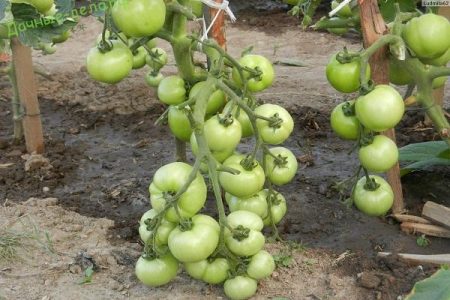
Fruit characterization
The fruits are characterized by small size, rounded teardrop-shaped with a nose at the end. The average weight of a tomato is 150 g. The pulp is juicy with a pleasant tomato acidity, the skin is dense and smooth. Harvests easily tolerate transportation and long storage.
Fifti tomatoes are, by the way, suitable for canning and harvesting for the winter, but also fresh are very good in salads.
When overripe, the core of the fruit becomes multi-chamber.
Grade Advantages
- harmonious sweet taste;
- high productivity;
- unpretentiousness in leaving during the growing season;
- heat resistance;
- simultaneous (friendly) ripening of tomatoes;
- long-term storage after harvest;
- universality of use;
- due to short stature, only a film cover is enough;
- resistant to diseases such as tomato mosaic, fusarium, apical and root rot.
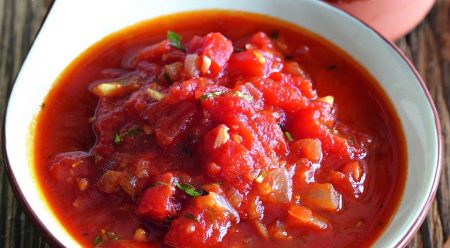
Cultivation agricultural
The tomato of the Fifti variety is unpretentious, but all the same, subject to all the rules of planting and care, you can get an excellent crop in the future and save yourself from additional hassle.
Preparing seeds for sowing
Before sowing the seeds need to be sprouted. To do this, wrap the planting material in a damp cloth and leave for several days.
Now the germinated seeds must be disinfected: prepare a weak solution of potassium permanganate and lower the planting material into it for half an hour.
And at the final stage of preparation, it is advisable to hold the seeds in a growth stimulator.
Sowing seeds
A week before sowing seeds, it is necessary to prepare the soil - in structure it should be loose. To do this, peat must be added to the soil and loosened well. To prevent infection with fungal spores, it is good to cultivate the soil for planting with Fitosporin.
Then prepare small pots and densely fill them with fertile soil. In the soil, make indentations of 2 cm and sow seeds not densely. Fill the seeds with soil and moisten the soil with room temperature water from the spray gun.
Cover the pots with transparent material (polyethylene or glass) and leave in a warm, well-lit place. Every day it is necessary to remove for some time the covering material for airing the soil and, if necessary, moisten the ground. As soon as the first sprouts appear, the shelter is removed altogether.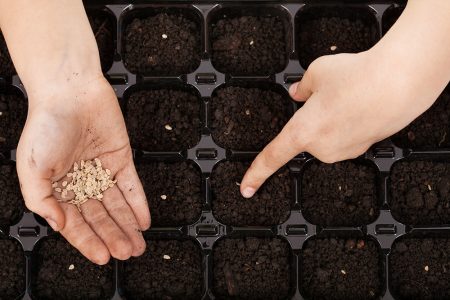
Picking seedlings
When 2 leaflets appear on the sprouts, it must be dived, that is, planted away from each other. This will allow the root system to strengthen and develop normally.
Again, prepare a small container, for example, plastic cups, and fill them with earth. Holes are made in the ground and sprouts are transplanted in them along with lumps of earth on the roots. Tamp the soil slightly and pour under the spine with warm water.
The container is again placed in a warm and bright room and regularly moisten the soil with room temperature water.
2 weeks before the alleged planting of seedlings on the bed of the plant, it is necessary to harden: for this, take seedlings to the street every day and leave it for several hours. Such measures will protect the bushes from various diseases in the future and strengthen the immunity of tomatoes.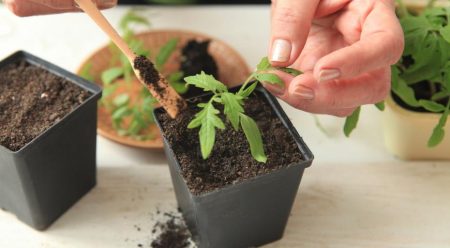
Planting seedlings in open ground
On a bed or in a greenhouse, well prepared holes for plants are prepared in advance. They are placed at a distance of 25 cm from each other. The distance between the rows should be about 70 cm. The plants are gently picked up with a knife or other improvised tool and taken out together with a lump of earth. Transplanted into the prepared hole, covered with earth and a little tamped. And at the final stage, it is necessary to pour water at room temperature under the root.
Bushes
Fifti tomato can be formed into 1 or 2 main stems. A second stem is needed in case the first stem dies.
When 3-4 brushes form on the bush, a second stem can be formed. To do this, select the strongest stepson, and pinch the rest.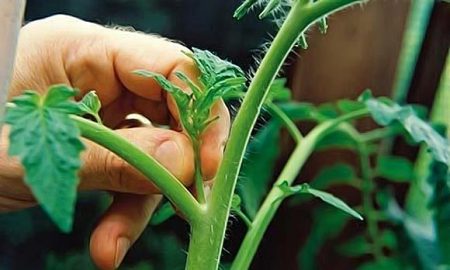
The second and all subsequent stepsons form after 1-2 inflorescences.
It is not recommended to form plants immediately in 2 stems, as this significantly inhibits the development of the plant and affects the quality of the crop. First, it is desirable to strengthen the plants, and only then load it with fruits.
Seedling Care
After planting seedlings in open ground, further care is not difficult and consists in regular watering, 4-time top dressing, weeding and pest and disease control.
Weeding and cultivation
From time to time, the soil around the bushes needs to be loosened and weeds removed - this will favorably affect the access of oxygen to the root system. It is advisable to carry out weeding in rainy weather, as this will allow excess moisture to evaporate.
Watering
Water the plant should be at least 1 time in 5 days. Water should in no case be cold, but only at room temperature.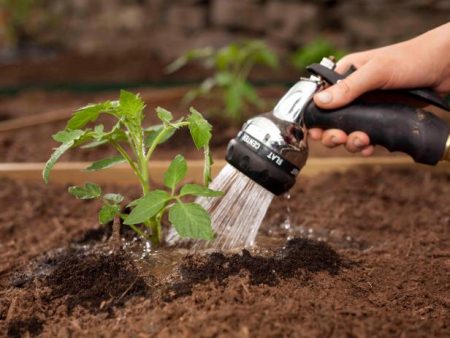
At the initial stage of cultivation, you can not greatly moisten the soil, as this can cause diseases of the root system. But you can’t delay it with watering - overdried soil provokes late blight disease.
Top dressing
Tomatoes need nitrogen, potash and phosphorus mineral fertilizing. They are carried out in the following order.
During planting seedlings on the bed, it is advisable to fertilize the prepared wells with wood ash or Nitrofos, and after filling with earth, mulch with straw or hay.
2 weeks after transplanting, the soil is fed with potash fertilizers.
A month later, during the growing season, nitrogen fertilizers are added.
At the beginning of fruit setting, the soil is fed with phosphorus fertilizers.
Tomato diseases and control
The Fifti variety is resistant to many diseases, but the implementation of additional preventive measures will protect young seedlings from a number of common ailments.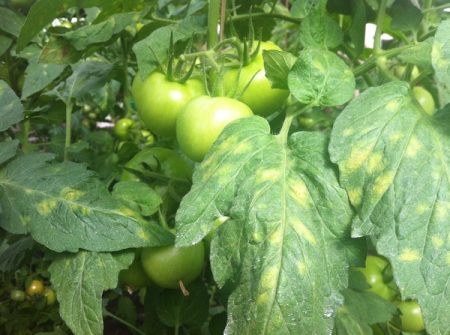
In order to avoid damage from fungal infections, it is advisable to treat the plants with copper-containing preparations: 70 g of Ordana or Kurzata R per 10 liters of water 2 weeks after planting seedlings on a bed.
The “Extrasol-55” tool will also help to protect the crop. Bushes are sprayed with a 1% solution in the ripening phase of the buds, in the process of flowering brushes and fruit ovaries.
In addition to the prevention of fungal and bacterial diseases, protective measures must be taken against pests and insects. In this case, you can use the insecticidal drugs "Avant", "Regent", "Fastak", "Fury". Processing with these agents is carried out every 2 weeks.
From year to year, the fight against ticks also becomes relevant. Against this scourge, you can use acaricides "Clipper", "Fitoverm" and "Omight."
Reviews
Reviews gardeners growing this variety in their subsidiary plots indicate that the tomato Fifti is very productive. In central Russia, it is advisable to grow a variety in greenhouses, as they grow slowly in open ground. Taste qualities of a tomato are evaluated on a solid five.




 Low-growing tomatoes, without pinching: 5 of the most delicious varieties
Low-growing tomatoes, without pinching: 5 of the most delicious varieties Why tomato seedlings grow poorly
Why tomato seedlings grow poorly We grow a tomato in a shell
We grow a tomato in a shell Growing tomatoes without watering according to the method of Kazarin
Growing tomatoes without watering according to the method of Kazarin